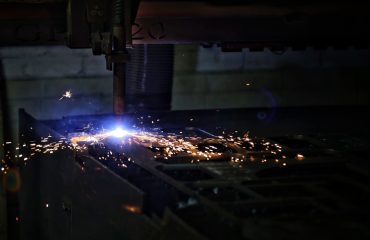The European Union’s CE marking is not just a symbol; it’s a passport to the vast European market. For steel manufacturers, obtaining CE certification is crucial for demonstrating compliance with essential safety and health requirements, opening doors to lucrative business opportunities. This guide unravels the complexities of achieving CE certification for steel products, providing a clear roadmap for navigating this essential process.
Understanding the CE Marking for Steel Products
The CE marking (Conformité Européenne) signifies that a product conforms to all applicable European Union directives. For steel products, this typically involves demonstrating compliance with relevant harmonized European standards (EN standards) related to safety, health, and environmental protection. These standards cover various aspects of steel production and application, including mechanical properties, chemical composition, and dimensional accuracy. It’s crucial to identify the specific directives and standards applicable to your particular steel product, as this varies depending on its intended use (e.g., construction steel, reinforcement bars, steel pipes).
Identifying Applicable European Standards (EN Standards) for Your Steel
This is a critical first step. The process begins with identifying the specific EN standards relevant to your steel product. These standards provide detailed specifications and test methods that must be met to achieve CE conformity. For instance, construction steel will have different requirements than steel used in automotive applications. Resources like the European Commission’s website and national standards bodies (e.g., BSI in the UK, DIN in Germany) can help you locate the correct EN standards. Failure to correctly identify and comply with the appropriate standards can lead to rejection of your CE marking application.
The Role of Testing and Conformity Assessment Procedures
Once the relevant EN standards are identified, the next stage involves rigorous testing and conformity assessment. This process verifies that your steel products meet the specified requirements. Several conformity assessment procedures exist, ranging from self-declaration (for simpler products) to full-scale testing by a Notified Body (NB). A Notified Body is an independent organization accredited by a Member State to assess the conformity of products. The choice of procedure depends on the complexity of the product and the associated risks. For high-risk steel products used in critical applications (e.g., structural steel in bridges), involvement of a Notified Body is mandatory.
Documentation and Declaration of Conformity
Meticulous record-keeping is paramount throughout the CE certification process. Comprehensive documentation is required to demonstrate compliance with all relevant EN standards and chosen conformity assessment procedure. This documentation typically includes test reports, manufacturing process descriptions, quality control procedures, and technical files. The culmination of this process is the Declaration of Conformity (DoC), a formal statement signed by the manufacturer, declaring that their steel products comply with all applicable EU directives and EN standards. This declaration must be readily available to authorities upon request.
Maintaining CE Compliance and Ongoing Obligations
Obtaining CE marking is not a one-off event. Manufacturers have ongoing obligations to maintain compliance. This includes regularly reviewing and updating their quality management systems, ensuring that their manufacturing processes remain consistent with the standards, and conducting periodic checks to verify continued compliance. Changes to EN standards or manufacturing processes may require reassessment and updated documentation. Failure to maintain compliance can lead to serious consequences, including product recalls, fines, and legal action.
Successfully navigating the CE certification process for steel products requires careful planning, meticulous documentation, and a thorough understanding of the relevant regulations and standards. By following these steps and engaging with qualified professionals when necessary, manufacturers can ensure their steel products meet the highest quality and safety standards, gaining access to the vast European market and enhancing their brand reputation.
SEO-Friendly Tags:
- CE marking steel
- Steel CE certification
- European steel standards
- EN standards steel
- Steel product certification




